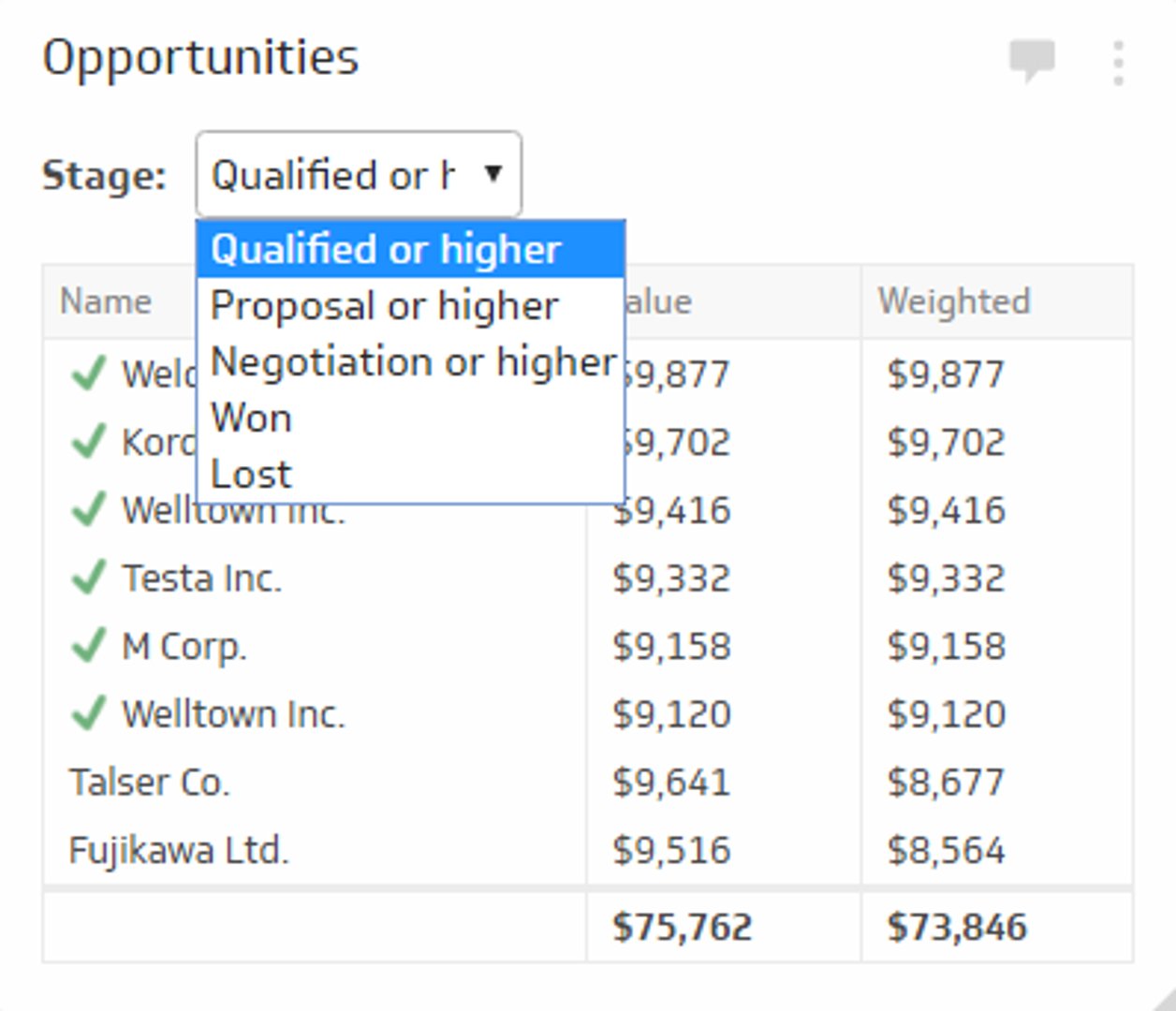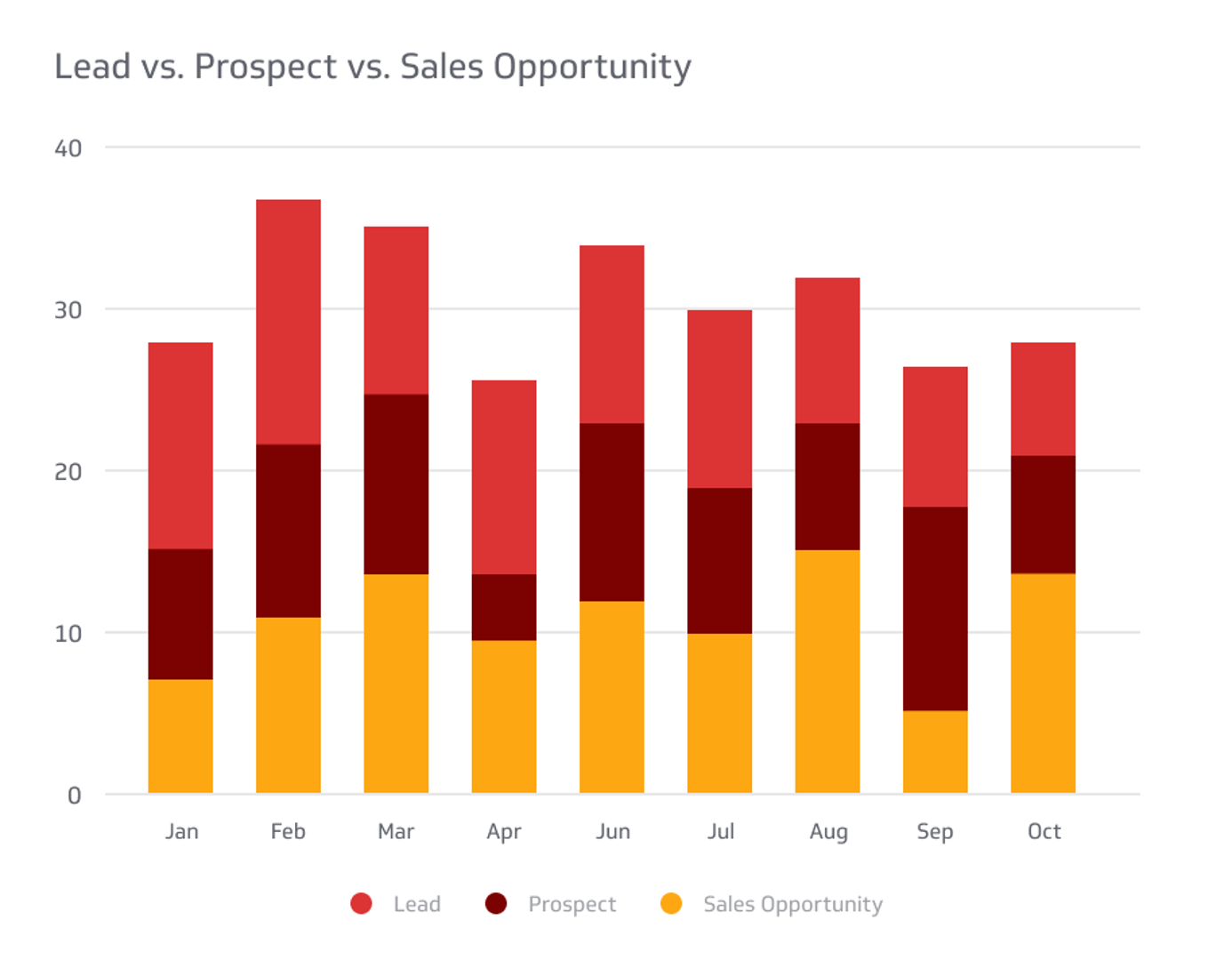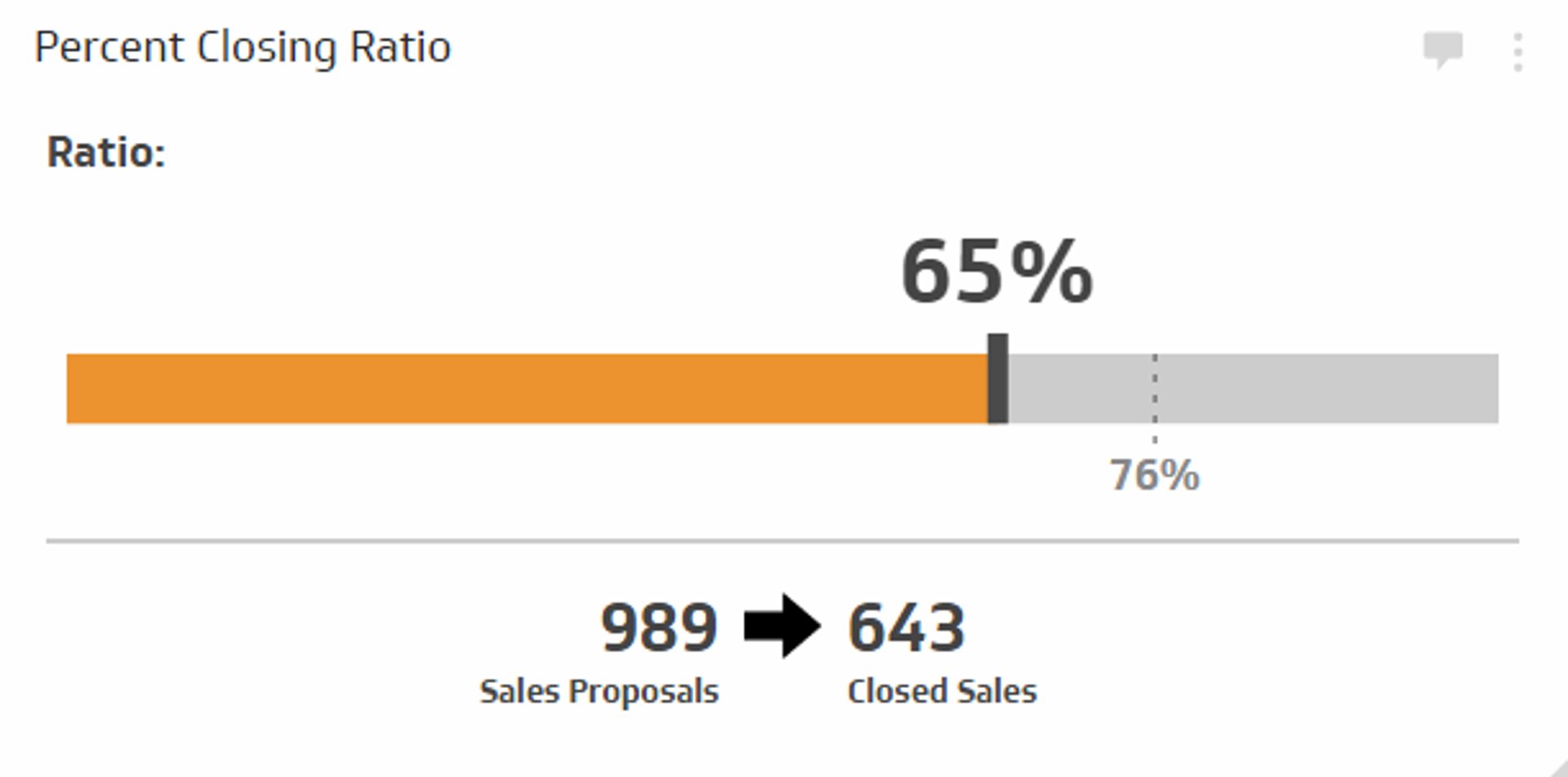Sales Opportunities Metric
Organize prospects based on opportunity value and probability.
Track all your Sales KPIs in one place
Sign up for free and start making decisions for your business with confidence.

Overview
The Sales Opportunity metric organizes prospects based on opportunity value and the probability of closing the sale. Each prospect has an estimated purchase value associated with them to help your team prioritize their efforts.
Prospects are sorted according to the likelihood of a win (stage) and the value of a win (estimated value). Each stage may have a weighted value associated with it to demonstrate the probability of making the sale. For example, a prospect rated as "negotiated" may have a weighted value of 0.5 applied to their estimated purchase value. Therefore, a prospect with a "negotiated" stage and an estimated purchase value of $10,000 will have a weighted value of $5,000.
Key terms
- Stage: Based on the type of contact your sales team has had with the prospect. Stages may include proposal (sales quote sent and received), qualified, or negotiation.
- Weighted value: A multiplier that is applied to the estimated value of a prospect based on the probability of closing the sale.
Success indicators
- Increased value per prospect.
- Increased probability of win for each stage.
- Improving the flow from one stage to the next.
Related Metrics & KPIs



